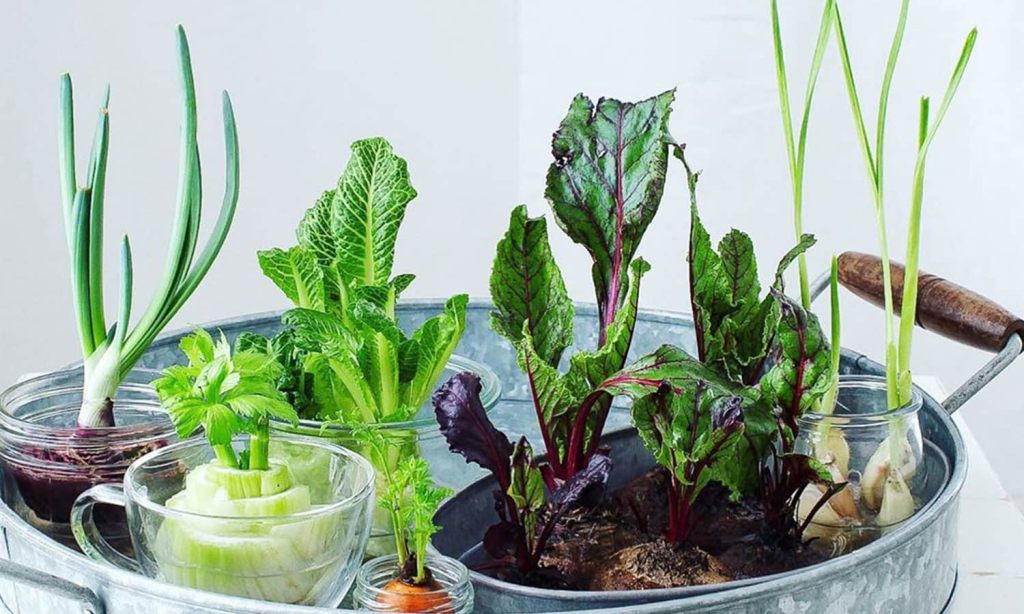You loved our guide to growing shallots in a jar, using off-cuts and just a little bit of water, but spring onions aren’t the only vegetables you can easily re-grow at home — and without soil, too.
By applying more or less the same three steps, you can start your own windowsill vegetable garden using only the roots, stems and trimming of the fresh produce you would normally pop in the compost bin.
Here are five veggies you can grow in water.
1. Shallots, spring onions
Shallots or spring onions elevate just about any savoury dish with a soft and sweet onion-like flavour. While they’re inexpensive to buy, shallots can lose their bite and potency over time in your fridge, and so they’re always best enjoyed fresh.
The good news is you can easily grow your own from the white ends you normally chop off. Simply place your ends unright into a small glass jar and fill the container with water to cover the roots. Swap out the water each day to keep it fresh and place the jar in a sunny spot on the windowsill.
Within a matter of days you’ll have shoots coming out left, right and centre, and essentially, free shallots for life.
2. Bok choy
See the shallow container on the far left of the image above? That’s bok choy regrowing from cut ends. Next time you eat the vegetable, save the ends and place them cut-side up in a shallow dish of water.
Place the dish in a sunny spot and frequently swap out the water as you would with shallots. Again, this process is fast, so expect to be enjoying free bok choy in a week or so.
3. Cabbage
Cabbage can be re-grown from its ends. Place the hard core cut-side up into a shallow dish with fresh water and enjoy watching tiny new leaves sprout from the inside. SeedsNow advises trimming and eating the new leaves while they’re still young. Apparently they’ll taste better this way.
4. Lettuce
Varieties like cos are quite reliable for re-growing at home. Save the bottom core from the next time you whip up a salad and place the ends in some water with the cut-side up. New growth will sprout from the centre, and you could have a new little head of lettuce in as little as two weeks.
5. Celery
This works best when you use the entire bulb, and the same steps are applied as with the head of cos lettuce. Chop your celery stems off and cook with them as normal, reserving about 5cm of the core to place in a bowl of shallow water.
After a few days in a very sunny spot, you’ll notice tiny celery leaves sprouting from the inside. Give it as long as it takes, swapping the water out regularly. Celery leaves have a mild flavour and can be used in a salad or as a garnish.
Read more stories from TheLatch— and follow us on Facebook.

